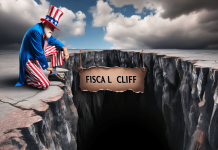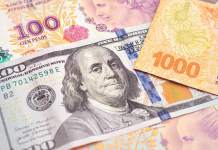The answer to the first question – the “why” – tells you that the answer to the second question – can gold go a lot higher still – is a resounding yes. And it’s not for the usual reasons you may sometimes see. Indeed, gold’s breakout has befuddled the media against rising bond yields and a relatively strong dollar – conditions under which gold has never staged a strong rally.
Losing the War
The “why” for gold’s surge starts with the Ukraine war – or, to be precise, with the fact that it has become utterly apparent that the West has lost, sending a searing message about our military capabilities or lack of them. The news of Ukraine’s losses had until recently been a well-kept secret, thanks to Western propaganda. But since the beginning of the year, the losses had become so severe that the media began preparing the West for Ukraine’s inevitable defeat – and, indeed, possible loss of sovereignty. Despite all the money and arms we gave Ukraine, despite all the sanctions we slapped on Russia, Russia is winning and devastating Ukraine in the process. Russia has shown it can produce military armaments such as tanks and shells more than twice as fast as NATO, which includes the U.S. And it has demonstrated that it can deploy superior military technology, including highly accurate hypersonic missiles, some of which can travel at 10x the speed of sound, rendering Western anti-missile defense system useless.
Unthinkable as it may seem to some, we’re no longer the world’s military hegemon. For good measure, the recent Iranian attack on Israel demonstrated that Iranian missiles could penetrate Israel’s most vital airbases, which are widely considered to be the most impenetrable tracks of land in the world. Iran is closely allied with China and Russia, giving it at least partial access to advanced military technologies.
The alliance between Russia and China has created a military power with far greater technological and manufacturing prowess than the West. Russia alone has more than demonstrated that prowess with the destruction of Ukraine.
It’s no coincidence that the rise in gold began in early March 2024, which is close to the time it became clear to the world that Russia’s slow grind strategy had succeeded beyond anyone’s expectations. On February 18th, 2024, a long article in the New York Times, part of the mainstream media, had long been praising Ukraine for holding its own against the ferocious ‘Russian’ bear. The article began:
“As the leaders of the West gathered in Munich over the past three days, President Vladimir V. Putin had a message for them: Nothing they’ve done so far — sanctions, condemnation, attempted containment — would alter his intentions to disrupt the current world order.”
In Munich, the mood was anxious and unmoored as leaders faced confrontations they had not anticipated. Barely an hour went by at the Munich Security Conference, during which the conversation did not turn to whether Congress would fail to find a way to fund new arms for Ukraine and, if so, how long the Ukrainians could hold out.
The message was clear: Russia’s success on the battlefield—including the recent taking of one of the most fortified and vital cities in the East—had made victory inevitable. The only hope was more aid from America. With that aid came some volatility in the gold market. However, as pointed out below, the aid, if anything, will hasten the inevitable Russian victory.
Ineffective Sanctions
The Ukraine war revealed our weakness in a second way, also related to the recent gains in gold: by showing the ineffectiveness of the one weapon we thought we could always count on – the power to impose sanctions thanks to the dollar’s role as a global currency. The 13 consecutive rounds of financial sanctions we imposed on Russia not only didn’t slow Russia down, but they boomeranged, hurting Western economies. Today, Russia’s economy is the fastest-growing of any developed country.
In stripping away the image of the U.S. as the giant on the world stage, Ukraine marks a historical inflection point that will lead to a new world order. The dollar will lose its clout in this new world, and gold will gain importance. The dollar’s long-term ability to maintain itself as the global reserve currency primarily reflected the arrangement we made in the 1970s with the Saudis, under which we promised to protect them in exchange for pricing their oil in dollars – the so-called petrodollar. But today, why would other countries want to look to us for protection when Ukraine has shown how much we lag in our military capabilities?
De-dollarization
One telling sign of how times have changed is the China-brokered warming of relations between former mortal enemies Saudi Arabia and Iran, both members of BRICS. The expansion of BRICS is another clear sign of change that points to a loss of status for the dollar, with BRICS tasked to develop a rival to the dollar that will primarily be backed by gold and used by current members of BRICS as well as other countries that are losing faith in the dollar. The likely popularity of the new currency is indicated not only by the ten current members of the economic alliance but by the more than 40 countries that have expressed interest in joining – and these do not just include Eastern countries but countries as close to the U.S. as Mexico. The ten current members account for about 40% of the world’s population and 33% of the world’s GDP (as measured by PPP).
De-dollarization is on its way, and the recent surge in gold is just the canary in the coal mine. It heralds the emergence of a BRICS gold-backed currency that will dethrone the dollar. The real reason gold has spiked is a dawning realization that this is in the works. As the development of such a currency proceeds, gold will still be pushed far higher. Just as pricing Saudi oil in dollars heralded the petrodollar, the pricing of oil in the BRICS currency would herald the end of the petrodollar. The West’s failure in Ukraine has sharply raised the odds that this will happen soon.
While BRICS is primarily an economic bloc whose principal assignment is aligning currency and financial issues among members, a sister grouping, the Shanghai Cooperation Organization (SCO), is focused on most of Asia, including the Middle East. As with BRICS, its three dominant members are China, India, and Russia. The SCO, the largest regional grouping globally, addresses a broader range of issues than BRIC. In addition to economic and political issues, the SCO is also a military and defense grouping. There are about 25 other members as well. Significant is that the UAE, Iran, and Saudi Arabia all participate in the SCO, as this strongly suggests that the Middle Eastern powers will be looking to other members of the SCO – especially China and Russia for military protection and critical protection of the routes that are necessary for maintaining trade with the rest of the world. In other words, China and Russia have replaced the U.S. as a protector of the Saudis and other Middle Eastern countries.
Barring a willingness to cooperate with the East – which the U.S. is unwilling to do, our country is in a desperate situation. Its financial architecture – including the dollar’s reserve currency status – stands between our still prominent place in the world and economic ruin. Without a reserve currency and the ability to print as much as we want, we cannot pay our debts or even the interest on the debts, and some form of total collapse is inevitable.
Desperation breeds desperate actions. This last weekend, Mike Johnson, the soon-to-be former Speaker of the House and resolutely disposed to no further aid to Ukraine, had a briefing with the CIA. In less than 24 hours, the one seemingly implacable barrier to further aid did a U-turn and agreed to a nearly $100 billion aid package. Ukraine got the lion’s share at $61 billion, with the rest going to Israel and Taiwan. That Johnson sacrificed his speakership to make this aid possible makes you wonder what was said in that briefing. I am guessing when I say it is likely, the message was pretty close to the truth. Johnson was told Ukraine is on the verge of utter defeat, whose knock-effects will include the significant Middle-East oil powers throwing their lot – full bore – with organizations led by China and Russia, BRICS, and the SCO. The aid is the only hope we have of delaying the day of reckoning as it would buy time to boost Ukraine’s efforts in the war, which might lead to a pause on the part of the Saudis in writing us off. Remember, the next BRICS meeting will be in October in Kazan, Russia. In the CIA’s calculus, that date, which could mark the introduction of the BRICS currency, is likely more important than the next month’s U.S. election.
The passage of the aid package and some hope that Ukraine might rally led to a significant one-day loss in gold. We expect it will soon become clear that the aid was tantamount to pouring gasoline on the fire. It forces us to print more money and further incentivizes the Russians to step up hostilities against Ukraine and, if anything, complete the task earlier than initially planned. Keep in mind with Ukraine’s casualties estimated between 500 and 600 thousand and monies already invested by the West in the war well over $150 billion, the extra weaponry will be weakened by finding soldiers to operate it. Ukraine’s most elite units have already been destroyed or, in some cases, are refusing to participate, which amounts to almost certain death. The Ukraine situation, when compared to a Russian army, which, thanks to 30,000 monthly volunteers, now numbers about one million, and Russian weaponry, which continues to improve, as recently evidenced by missiles reaching ten mach, has never been better positioned to overwhelm what is left of Ukraine entirely – more weapons or not.
For investors, it’s essential to realize that investing in gold may be your only pathway to having a store of wealth that protects you as the era of the dollar comes to an end. At the same time, I realize that the price we will pay means living with sharply increased volatility – as much as the desperate United States can create – in the gold market. But this is a small price for what is likely to be a multi-year run in a historic bull market that will be perhaps the only way of protecting your financial well-being.
Thoughts from the editor…
The article above presents a persuasive argument for investing in gold due to the current global political and economic climate. The author suggests that the Ukraine war and the West’s apparent loss in the conflict have exposed our military and economic weakness, leading to a loss of confidence in the U.S. as a global hegemon. This has resulted in a rise in the value of gold and a potential decrease in the dollar’s status as the global reserve currency. The author also argues that the ineffectiveness of sanctions and the growing technological and manufacturing prowess of Russia and China have further weakened the West’s position. Overall, the article makes a compelling case for why investing in gold could be wise in light of these developments.

















